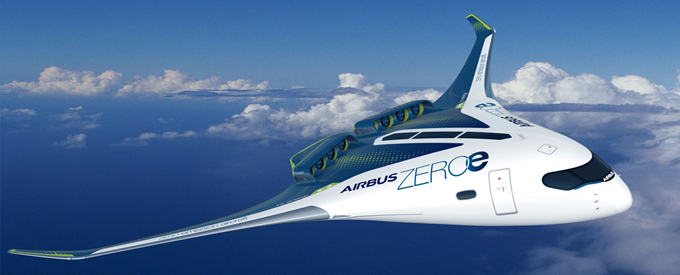2020-10-13
Airbus Unveils Zero-emission Concept Aircraft
According to reports, numerous new aircraft models in most seat categories have recently entered commercial service or are imminent in the next few years. Under favourable conditions, their fuel burn per available seat-km is typically 15 to 25 per cent less than that of the aircraft models they replace. In the longer term towards 2050, radically new aircraft configurations will be required to reduce fuel burn and carbon intensity significantly.
Airbus recently revealed three concepts for the world’s first zero-emission commercial aircraft, which could enter service by 2035. These concepts each represent a different approach to achieving zero-emission flight, exploring various technology pathways and aerodynamic configurations in order to support the company’s ambition of leading the way in the decarbonisation of the entire aviation industry.
All of these concepts rely on hydrogen as a primary power source; an option that the company believes holds exceptional promise as a clean aviation fuel and is likely to be a solution for aerospace and many other industries to meet their climate-neutral targets.
“This is a historic moment for the commercial aviation sector as a whole and we intend to play a leading role in the most important transition this industry has ever seen. The concepts we unveil offer the world a glimpse of our ambition to drive a bold vision for the future of zero-emission flight,” said Guillaume Faury, Airbus CEO. “I strongly believe that the use of hydrogen, both in synthetic fuels and as a primary power source for commercial aircraft, has the potential to significantly reduce aviation’s climate impact.”
The three concepts, all codenamed “ZEROe”, for a first climate neutral zero-emission commercial aircraft include:
Turbofan Design:
Running on Hydrogen
A turbofan design (120-200 passengers) with a range of 2,000+ nautical miles, is capable of operating trans-continentally and powered by a modified gas-turbine engine running on hydrogen, rather than jet fuel, through combustion. The liquid hydrogen will be stored and distributed via tanks located behind the rear pressure bulkhead.
Turboprop Design:
Solution for Short-haul
A turboprop design (up to 100 passengers) using a turboprop engine instead of a turbofan and is also powered by hydrogen combustion in modified gas-turbine engines, which would be capable of traveling more than 1,000 nautical miles, making it a perfect option for short-haul trips.
Blended-wing body Design:
Futuristic Concept
In this design (up to 200 passengers) concept, the wings merge with the main body of the aircraft with a range similar to that of the turbofan concept.
The blended wing body (BWB), also called hybrid wing body (HWB), is mainly a large flying wing, which contains a payload area (passenger cabin or cargo storage area) within its centre section. The shape of the centre body and the outer wings are smoothly blended. In the past, the flying wing design was mainly used for military aircraft, such as the Northrop B-2 bomber. In civil aviation, the BWB is seen as a typical example of a “futuristic” new aircraft category, which could potentially enter into service in civil aviation in the next decades. Its aerodynamic shape allows generating lift by the entire aircraft, which is thus significantly higher than for conventional tube-and-wing configurations.
The exceptionally wide fuselage opens up multiple options for hydrogen storage and distribution, and for cabin layout.
“These concepts will help us explore and mature the design and layout of the world’s first climate-neutral, zero-emission commercial aircraft, which we aim to put into service by 2035,” said Faury. “The transition to hydrogen, as the primary power source for these concept planes, will require decisive action from the entire aviation ecosystem. Together with the support from government and industrial partners we can rise up to this challenge to scale-up renewable energy and hydrogen for the sustainable future of the aviation industry.”
In order to tackle these challenges, airports will require significant hydrogen transport and refuelling infrastructure to meet the needs of day-to-day operations. Support from governments will be key to meet these objectives with increased funding for research & technology,
digitalisation, and mechanisms that encourage the use of sustainable fuels and the renewal of aircraft fleets to allow airlines to retire older, less environmentally friendly aircraft earlier.


No Comments